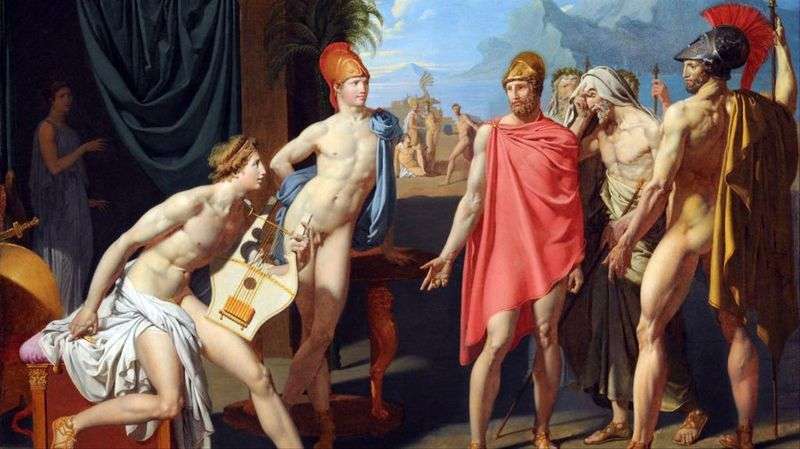
Twenty-year-old Jean Auguste Dominique Ingres, a French painter – an academician at the dawn of his work often turned to historical subjects and myths for narration in oil. “Ambassadors of Agamemnon in the tent of Achilles” – the canvas of 1801 of execution, reflects fully the inner world of the young painter and his desire to imitate the Renaissance and the canons laid by Raphael himself. These are stately bodies, as a rule, naked with the nature of addition. It’s a drapery and a juicy blue horizon. This is a silent dialogue of heroes, the presence of attributes of belonging to the aristocratic class.
The presented canvas, very juicy and bright, differs from further examples of its performance with the immediacy of the palette and some kind of gay composition. Then Ingres did not focus his attention on the minimum of the characters, but tried to pour out the sensations about this or that story. And so, Achilles and Agamemnon. These are mythical characters, heroes of Homer’s epic “Iliad”.
The events unfold during the Great Trojan War for the tenth year from its inception, when Agamemnon, the Mycenaean king, angered the god Apollo, driving out his priest Chris in response to a request to return to him the beautiful daughter Chrysaides for reward. Without discrimination in response to the humiliation of his priest Apollo began to throw his arrows on the Greek land, which forced him to assemble on the advice of the hero Achilles and the generals, headed by King Agamemnon. Achilles turned to Agamemnon first with exhortations about the return of Chriseed to his father, about mercy, about prudence, which he agreed to abandon the chosen one in return for the Achilles beloved Briside.
There was no battle between rivals, but the Gods forgave Agamemnon, but he himself did not forget his resentment and after the grace of God sent the heralds to the tent of Achilles in order to take Brisidus… It was the moment of the negotiations that was the key to creating this picture. Ingres gave his heroes liberated manners and poses, a free foreshortening and characteristic nudity. Bright apparels are expressive, and the milky-white skin of men completely contradicts their turbulent military life and wanderings in eternal campaigns.
The lighting that falls on people’s torsos and the foreground, is akin to an artificial pavilion, without an atmosphere. The author’s letter is amazingly its even base and gloss. Ingres did not like the mixing of colors, so his picture “smells” of purity of color, including the correctness of lines and the simplicity of the narrative. This is the author’s early work, still fresh, still multicolored.
 Euribat and Talfbiy, leading Briseid to Agamemnon by Giovanni Battista Tiepolo
Euribat and Talfbiy, leading Briseid to Agamemnon by Giovanni Battista Tiepolo Joan of Arc on the coronation of Charles VII by Jean Auguste Dominique Ingres
Joan of Arc on the coronation of Charles VII by Jean Auguste Dominique Ingres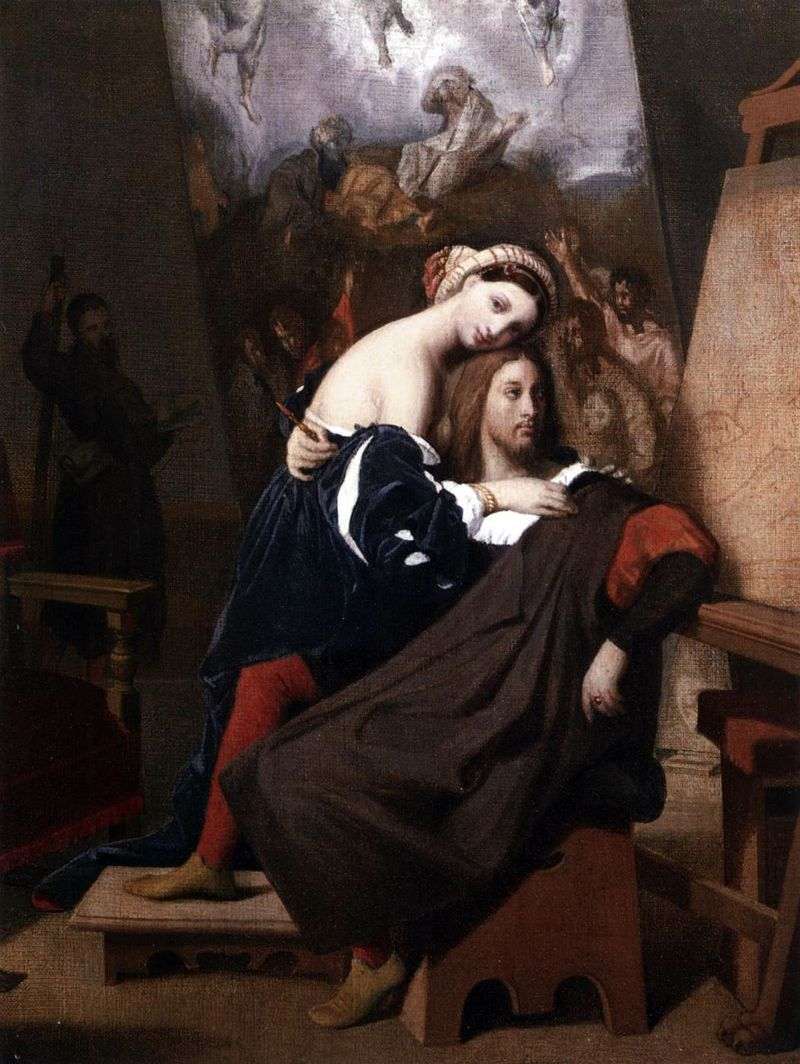 Rafael and Fornarina by Jean Auguste Dominique Ingres
Rafael and Fornarina by Jean Auguste Dominique Ingres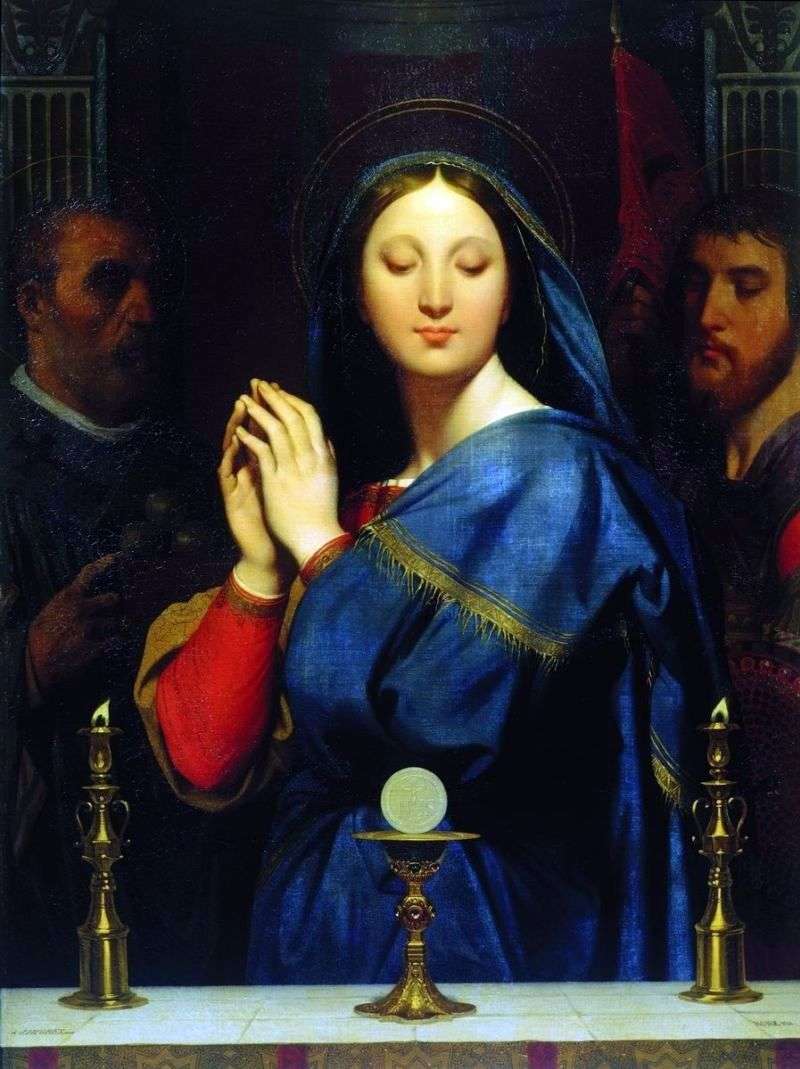 Madonna in front of a cup with participle by Jean Auguste Dominique Ingres
Madonna in front of a cup with participle by Jean Auguste Dominique Ingres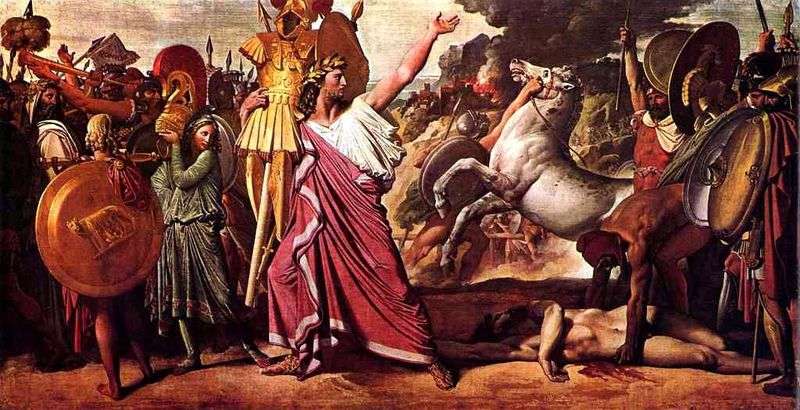 Romulus by the winner of Akron – Jean Auguste Dominique Ingres
Romulus by the winner of Akron – Jean Auguste Dominique Ingres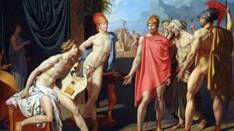 Ambassadeurs d’Agamemnon sous la tente d’Achille – Jean Auguste Dominic Ingres
Ambassadeurs d’Agamemnon sous la tente d’Achille – Jean Auguste Dominic Ingres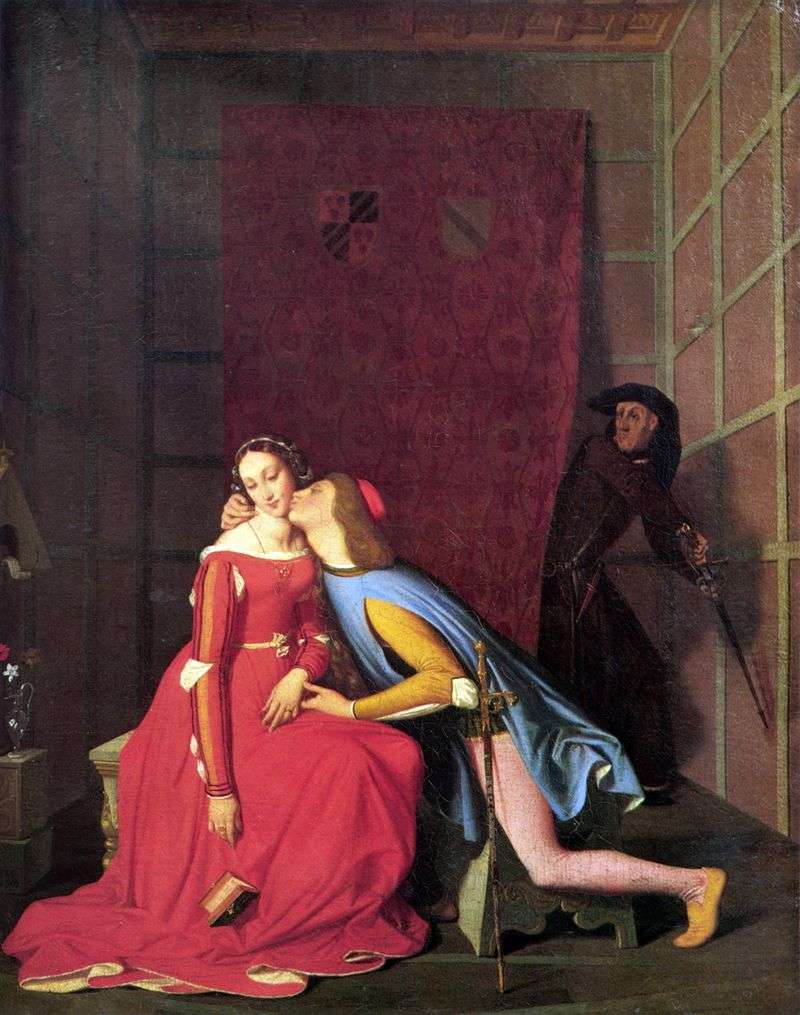 Gianchotto overtakes Paolo and Francesca by Jean Auguste Dominique Ingres
Gianchotto overtakes Paolo and Francesca by Jean Auguste Dominique Ingres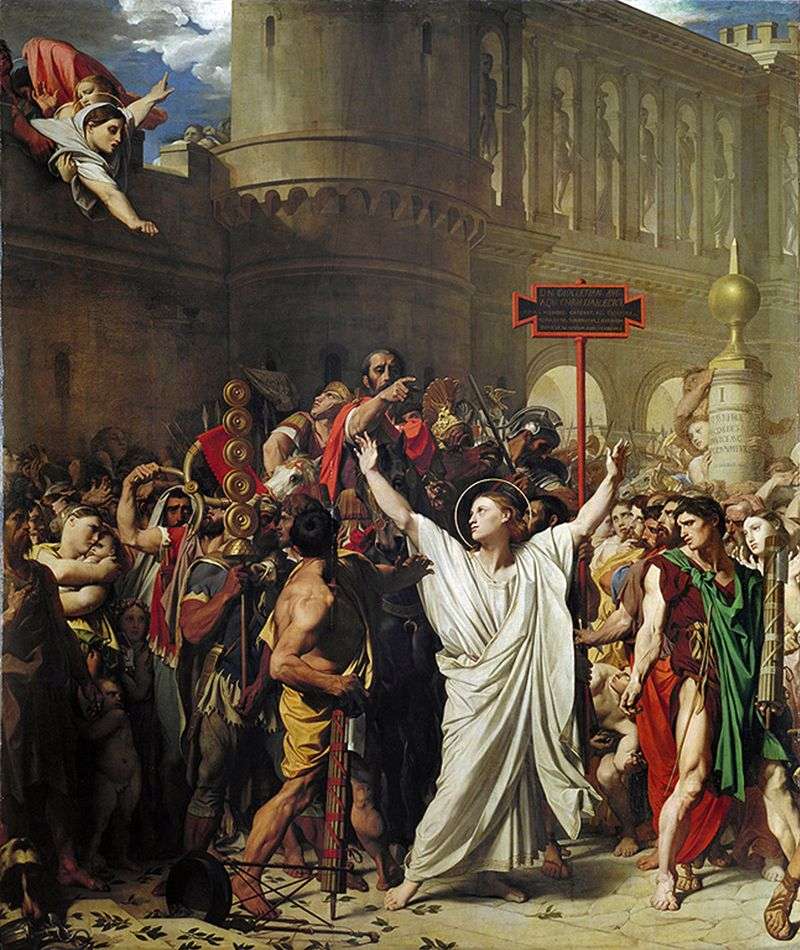 The Martyrdom of Saint Symphorion by Jean Auguste Dominique Ingres
The Martyrdom of Saint Symphorion by Jean Auguste Dominique Ingres